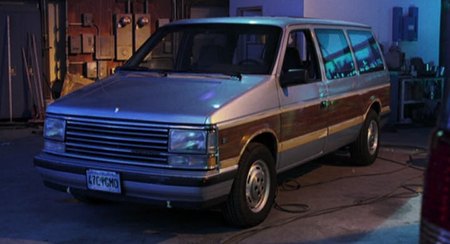Capsule Review: 1989 Plymouth Grand Voyager

Who really debuted the first ever mini-van? The title remains hotly contested, between Renault’s Espace, and ChryCo’s Caravan/Voyager twins (not to mention the VW Microbus). But to North Americans and Europeans, that’s a moot point; both were first in their respective markets. The 1984 off-spring of Lee Iacocca came from Chrysler’s S-Platform, a stretched version of the K-Car chassis. (Yes, the very chassis that saved the Pentastar brand with its first-ever federal bailout.) By rejecting the normal rear wheel-drive layout of the time, the Voyager came off as a modern marvel. It boasted a transverse-front wheel-drive layout, flexible seating, good fuel economy, a smooth ride and car-like handling– something that took the other two Detroiters several years to figure out.
My 10-year odyssey with Beelzebub, the screaming white brick of death, cemented in my mind as a van that was well designed, but not much fun to drive (to a 15 year old). While the Grand Caravan wasn’t exactly full of character, it helped create its own identity by the memories and experiences that occurred within into its cavernous interior. With the seats removed, it could fit 17 teenagers on a pilgrimage to Taco Express. FYI.

More by Mike Solowiow
Latest Car Reviews
Read moreLatest Product Reviews
Read moreRecent Comments
- ToolGuy TG likes price reductions.
- ToolGuy I could go for a Mustang with a Subaru powertrain. (Maybe some additional ground clearance.)
- ToolGuy Does Tim Healey care about TTAC? 😉
- ToolGuy I am slashing my food budget by 1%.
- ToolGuy TG grows skeptical about his government protecting him from bad decisions.


































Comments
Join the conversation
Did those things came equipped with Chrysler's 2.2 or 2.5 Turbo four? I've read some tales about some very cool turbo screammers in the internet.
Wow, this really brings back memories. My parents bought a 1989 DGC because I was born and my sister came along later on in 1992. I remember we always took this car to L.A. and Santa Cruz. Sadly it was poorly made and at 10,000 miles you can hear the sliding door squeek and at 35,000 miles the tranny bombed. It was really in innovative minivan though I gotta admit.